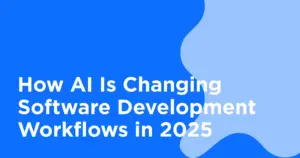In the ever-evolving landscape of technology, programming languages rise and fall in popularity, influenced by emerging trends, industry demands, and the advent of new technologies. As we look back at 2023, it’s evident that certain languages have dominated the scene, becoming the go-to choices for developers worldwide. In this article, we’ll explore the 10 most popular programming languages of 2023, delving into their unique features, use cases, and reasons for their widespread adoption.
1. Python
Versatility and Ease of Use
Python continues to reign supreme as one of the most popular programming languages in 2023. Its simple and readable syntax makes it an ideal choice for beginners, while its powerful libraries and frameworks cater to experienced developers. Python’s versatility allows it to be used in various domains, including web development, data science, machine learning, artificial intelligence, and automation.
Key Features
- Readable and concise syntax: Python’s syntax is designed to be intuitive and easy to understand, reducing the learning curve for new programmers.
- Extensive libraries and frameworks: Libraries like NumPy, pandas, and TensorFlow provide robust tools for data manipulation and machine learning.
- Strong community support: Python boasts a large and active community, offering abundant resources, tutorials, and forums for problem-solving.
2. JavaScript
The Language of the Web
JavaScript remains a cornerstone of web development, powering dynamic and interactive web applications. Its ability to run on both the client and server sides makes it indispensable for full-stack development. In 2023, JavaScript has further solidified its position with the rise of frameworks and libraries like React, Angular, and Vue.js.
Key Features
- Asynchronous programming: JavaScript’s support for asynchronous operations allows for responsive and smooth user experiences.
- Rich ecosystem: A vast array of libraries and frameworks enable rapid development and code reuse.
- Cross-platform compatibility: JavaScript can be used for web, mobile, and even desktop application development through technologies like Electron.
3. Java
The Enterprise Workhorse
Java’s longevity and stability have made it a mainstay in enterprise environments. In 2023, Java continues to be the preferred choice for large-scale applications, financial services, and Android app development. Its strong performance, security features, and extensive ecosystem contribute to its enduring popularity.
Key Features
- Platform independence: Java’s “write once, run anywhere” philosophy ensures compatibility across various platforms.
- Robust security: Built-in security features make Java a reliable choice for sensitive and mission-critical applications.
- Scalability and performance: Java’s performance optimization capabilities make it suitable for high-traffic applications.
4. C#
Microsoft’s Powerhouse
C# (C-sharp) remains a key player in the programming world, particularly in the realm of Windows applications and game development. Backed by Microsoft, C# has a strong presence in enterprise software development, web services, and Unity game development.
Key Features
- Object-oriented programming: C# supports modern programming paradigms, making it efficient for developing complex applications.
- Integration with .NET framework: The .NET ecosystem provides a comprehensive set of tools and libraries for building robust applications.
- Cross-platform development: With the advent of .NET Core, C# has become a viable option for cross-platform development.
5. C++
The Performance King
C++ is known for its high performance and low-level memory manipulation capabilities, making it the language of choice for system software, game development, and real-time applications. In 2023, C++ continues to be favored for applications where speed and efficiency are critical.
Key Features
- Performance optimization: C++ allows fine-grained control over system resources, leading to highly optimized applications.
- Versatility: Used in various domains, including operating systems, game engines, and embedded systems.
- Rich standard library: The Standard Template Library (STL) provides a collection of ready-to-use algorithms and data structures.
6. Go
Simplicity and Performance
Go, also known as Golang, has gained significant traction in 2023 due to its simplicity, efficiency, and strong support for concurrent programming. Developed by Google, Go is widely used in cloud computing, server-side applications, and microservices architectures.
Key Features
- Simplicity: Go’s straightforward syntax and minimalistic design promote code readability and maintainability.
- Concurrency: Built-in support for concurrent programming with goroutines and channels.
- Fast compilation: Go’s fast compilation times enhance development productivity and iteration speed.
7. TypeScript
JavaScript, but Better
TypeScript, a superset of JavaScript, has seen rapid adoption due to its enhanced tooling, static typing, and improved maintainability. In 2023, TypeScript has become the preferred language for large-scale JavaScript projects, providing a more robust development experience.
Key Features
- Static typing: TypeScript’s type system helps catch errors at compile-time, improving code quality.
- Improved tooling: Enhanced editor support, autocompletion, and refactoring capabilities.
- Seamless JavaScript integration: TypeScript code can be seamlessly integrated with existing JavaScript codebases.
8. Kotlin
The Future of Android Development
Kotlin, endorsed by Google as the preferred language for Android development, continues to grow in popularity. Its concise syntax, null safety features, and full interoperability with Java make it an attractive choice for mobile developers in 2023.
Key Features
- Concise syntax: Kotlin reduces boilerplate code, resulting in cleaner and more readable codebases.
- Null safety: Built-in null safety features reduce the risk of null pointer exceptions.
- Interoperability: Full compatibility with Java allows for smooth migration and integration with existing Java projects.
9. Swift
Apple’s Darling
Swift, developed by Apple for iOS and macOS development, has maintained its popularity due to its performance, safety features, and ease of use. In 2023, Swift remains the go-to language for developing iOS applications, offering modern programming paradigms and powerful tools.
Key Features
- Performance: Swift is designed to be fast and efficient, rivaling the performance of Objective-C.
- Safety: Strong typing and error handling mechanisms enhance code reliability.
- Interoperability: Swift can seamlessly integrate with Objective-C, facilitating code reuse and migration.
10. Rust
Safety and Performance
Rust has gained a loyal following in 2023 for its emphasis on safety, performance, and concurrency. Often compared to C++, Rust stands out as a preferred choice for system-level programming, web assembly, and high-performance applications.
Key Features
- Memory safety: Rust’s ownership model ensures memory safety without a garbage collector, preventing common bugs like null pointer dereferencing.
- Concurrency: Advanced concurrency features enable the development of highly concurrent applications.
- Performance: Rust provides low-level control over system resources, similar to C++, while maintaining safety guarantees.
Conclusion
The programming landscape in 2023 has been shaped by the diverse needs of developers and the evolving technological environment. The 10 most popular programming languages highlighted in this article each offer unique advantages, catering to different domains and use cases. Whether you’re a beginner looking to learn your first language or an experienced developer seeking to expand your skill set, understanding the strengths and applications of these languages will help you make informed decisions in your programming journey.
As technology continues to advance, new languages will emerge, and existing ones will evolve. Staying updated with the latest trends and continuously learning will be key to thriving in the dynamic world of programming.
Conclusion :
The most popular programming languages of 2023 according to the survey are Java, Python, and JavaScript.
These findings show that there is a trend towards languages that offer more readability and flexibility.
As companies look for ways to reduce costs and increase efficiency, it’s likely that these trends will continue in the coming years. If you’re interested in learning a new programming language, these three are worth considering.
Yoocollab has been working with the most popular programming languages for more than a decade.
If you have a development project and want to stick to the tech trends, outsource your project to our team and your project success will be guaranteed.




